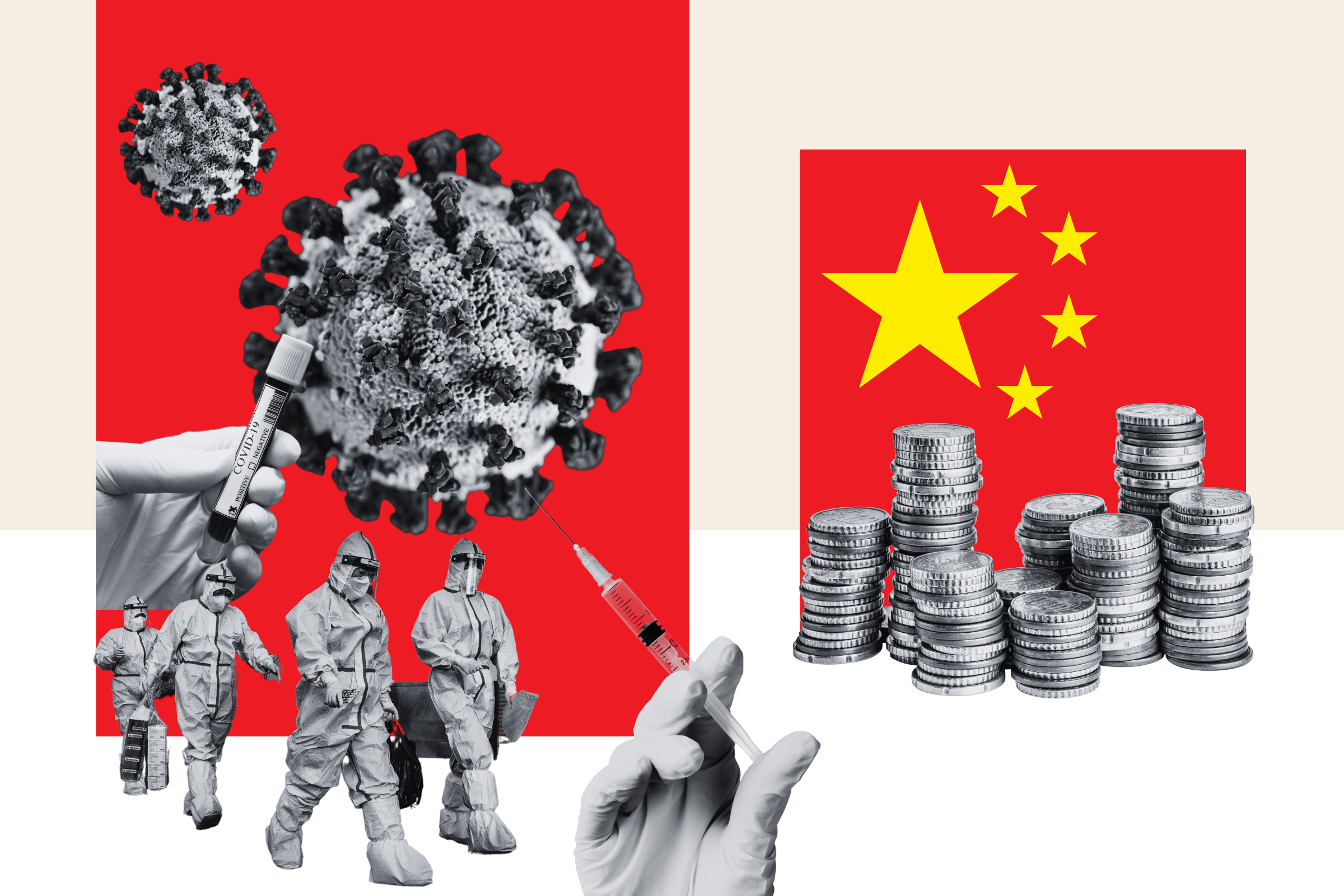Some of the hottest tickets in China of late were not for the Olympic Games, but for major contemporary-art shows. At the Shanghai Art Museum, crowds queued for up to four hours on the opening Sunday of the city's international Bienniale Sept. 14; some 11,000 people swarmed inside before staff had to halt admission because the museum was too full. Many would-be visitors made do with taking photographs of the works scattered around the park outside, including a decrepit steam locomotive and antique railway carriage, shipped in as part of an installation by artist Jing Shijian.
The somber-looking work symbolized the journey of millions of urban Chinese youth who were transported to the countryside by Chairman Mao at the height of the Cultural Revolution in the 1960s. It's a subject still rarely open for public discussion in China—and a reminder that contemporary art has, in recent years, been pushing for greater freedom in a society where expression is still often controlled.
Though its theme, "Translocalmotion"—a reference to China's massive rural-to-urban migration—was not particularly original or provocative, many of its works were. Brazilian artist Ricardo Basbaum's installation featured closed-circuit television cameras trained on the audience, an apparent reference to the surveillance measures in nearby People's Square, seat of the Shanghai government. Jin Shi created a model of the spare, harsh rooms inhabited by many migrant workers. The show's most striking work, a colorful parade of giant steel dinosaur sculptures with grinning human faces—the trademark image of contemporary painter Yue Minjun—could be read as a reflection of Yue's cynicism toward modern society.
The arrival of swarms of foreign curators, critics and collectors underscored what big business Chinese art has become—and why Chinese authorities have backed off. "In the 1980s the government actively combated [contemporary art]; in the '90s they ignored it," says Ulli Sigg, a former Swiss ambassador to China who set up one of the first—and largest—collections of contemporary Chinese art in the 1990s. "But now, gradually, they are discovering that it is a financial resource—the world wants Chinese art, so they are slowly getting into it." Pi Li, a curator and art critic who teaches as the Central Academy of Fine Art in Beijing, says the government stopped abruptly shutting down contemporary-art shows around 2000, as it prepared to join the World Trade Organization. "It wanted to prove how much we'd improved on human rights," he says.
The Bienniale was not the only show to come to Shanghai in September (it runs through Nov. 16). The second ShContemporary Art Fair was also in town Sept. 9 through 13; organized by Lorenzo Rudolph, the man originally behind Art Basel, it brought to Shanghai works from 140 contemporary galleries from China and the rest of Asia, as well as Europe and America. A string of other major contemporary-art exhibitions also opened around the country, in public museums—including the Nanjing Biennial and the respected Guangzhou Triennial—as well as in dozens of private galleries.
Few subjects remain off-limits for artists. Though a pair of tattooed pigs was banned from ShContemporary—ostensibly for sanitary reasons—a tattooed man was put on sale, and reportedly sold for $150,000. Other works at ShContemporary included Zhang Peng's sinister photo images of doll-like women performing surgery on a dog, and Osama bin Laden brandishing a rifle as he stands over a female figure with her skirt hiked up. At the Shanghai Museum of Contemporary Art, Michael Wolf's stunning photos depicted piles of Chinese-made toys and the factory workers who manufactured them.
Some experts remain skeptical of the government's newfound openness. Pi Li, who worked with China's Ministry of Culture to curate shows of Chinese contemporary art at the Venice Biennale and the Centre Pompidou in Paris, says that during his collaboration with the government, works were tightly screened and often changed at the last minute from their original proposals. And there are still instances of censorship; earlier this year authorities for unspecified reasons abruptly pulled a show of performance artist Zhang Huan, who returned from abroad to open a large studio in Shanghai.
Still, there are signs that contemporary art is growing deeper roots in China. Cai Guo-Qiang, who works in gunpowder and is one of the best-known Chinese artists abroad—he recently had a show at the Guggenheim in New York—was asked to help devise the fireworks display for the Olympics opening ceremonies. The controversial Xu Bing, who lived in exile in the United States in the 1980s and '90s, has returned to teach at the Central Academy of Fine Arts. "I think the whole country is now less uptight about cultural policing," says Johnson Chang, whose Hanart gallery in Hong Kong was one of the first to show contemporary Chinese art and who was invited to curate this year's Guangzhou Triennial. "The government is experimenting with contemporary art as a civic space. They may not endorse it officially, but they certainly have been very tolerant and quietly consenting."
He should know. This year's Triennial (through Nov. 16) features 170 artists under the banner "Farewell to Post-Colonialism." Unusually for China, 140 of the works are by foreign artists, including 30 film and video works by young Middle Easterners. Keynote pieces include an installation by Shanghai artist Liu Dahong composed of a giant tent, which all visitors have to walk through, featuring images of Chinese political leaders painted in the style of Christian triptych icon paintings. "It's a very sarcastic look at the foundation of Chinese modernity, the Western roots of communism, the obsession with the end of history and salvation," says Chang.
Critics caution that without more infrastructure, China's soaring art market could be headed for collapse. The country still lacks a system of gallery endorsement and museum hierarchy, says Chang: "Artists leap immediately from their studios into a biennial in Venice or whatever." Sigg agrees that China, which has no public museums with major collections of contemporary domestic art, lacks credible institutions that could help balance the market in setting values for art. But it's tough to argue with a buyer willing to pay $150,000 for a tattooed man.
Uncommon Knowledge
Newsweek is committed to challenging conventional wisdom and finding connections in the search for common ground.
Newsweek is committed to challenging conventional wisdom and finding connections in the search for common ground.
About the writer
To read how Newsweek uses AI as a newsroom tool, Click here.






